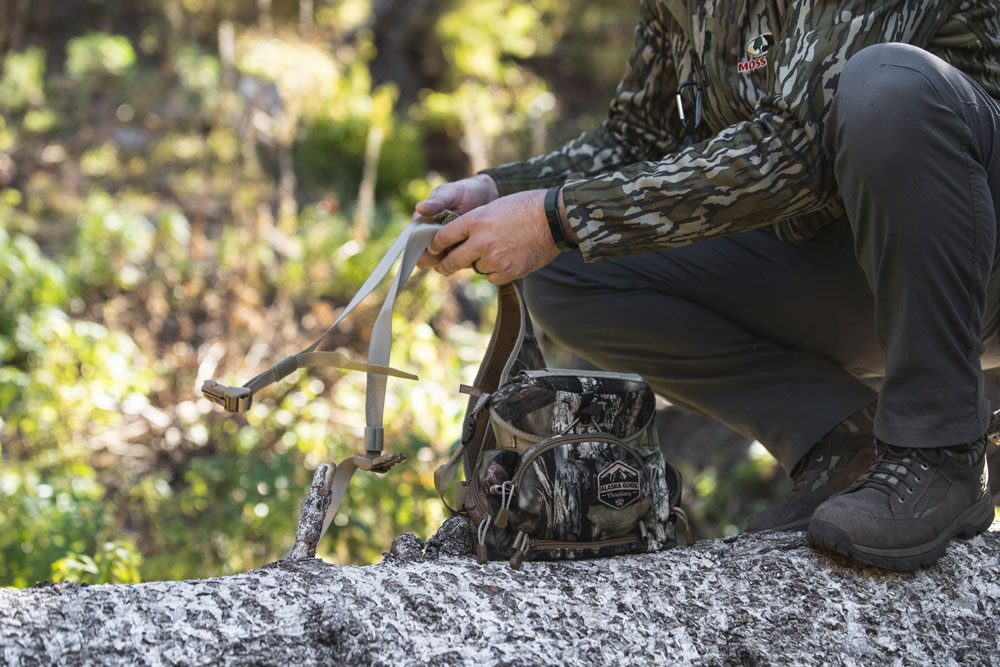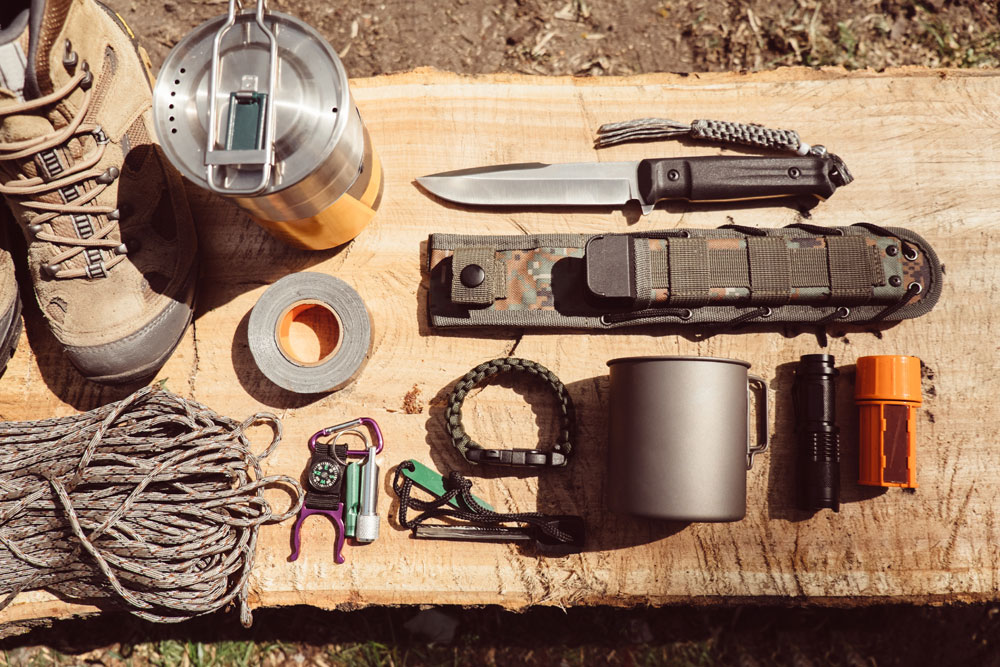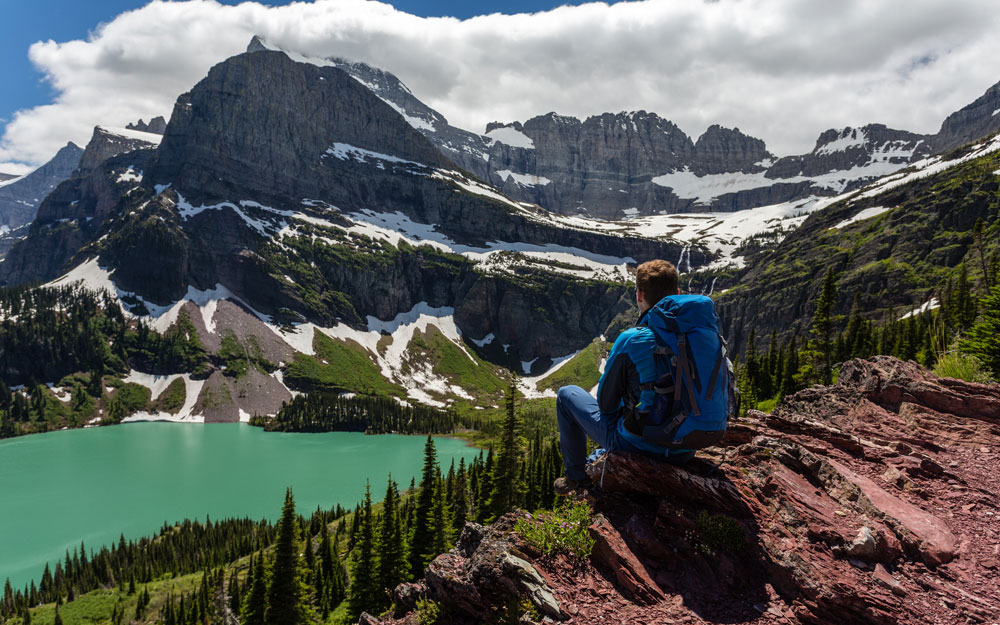Camping is an exhilarating way to escape the daily grind and reconnect with nature. While most people associate camping trips with big group gatherings of family and friends, solo camping is equally enjoyable. However, it poses several unique physical and psychological challenges for campers who haven’t ventured out alone in the wilderness before. It is critical to pack the right gear and take careful safety precautions to ensure a fun and successful solo camping trip.

1. Start Slow, Stay Close
Even if you have been backcountry camping before, camping alone is a different experience, so it is essential to start slow when heading out on your first solo adventure. Plan a two- to three-day trip, and build up to a week or more with each successive solo outing.
For your first couple of trips, choose a location close to home and familiar to you. This ensures you know the terrain and any potential hazards, to reduce the likelihood of accidents. Before your trip, go on a day hike to the location and scout the area, noting water sources, amenities and risk factors like local wildlife.
Consult meteorology websites and listen to local weather reports to familiarize yourself with the weather conditions you are likely to experience, so you can pack accordingly.
2. Share Your Itinerary
Your itinerary contains information on activities you’re likely to complete each day and their locations. While you don’t need to adhere exactly to your daily itinerary, you should try to stick to it as closely as possible. Letting people know where you will be narrows the search parameters, ensuring emergency services can reach you even if you don’t have a communication device or GPS locator.
3. Know the Basics
Solo camping means you can’t rely on others’ outdoor expertise to get a fire started or pitch a tent. Before heading out on your own, brush up on your basic camping and survival skills. This includes learning how to:
- Find or make a shelter.
- Build a fire.
- Locate a water source and purify your water for drinking.
- Set snares or traps to catch food.
- Forage for safe edible plants.
- Send a rescue signal.
- Navigate using a compass and paper map.
- Perform basic first aid on yourself.

4. Bring an Emergency Kit
Accidents happen while camping. When you are alone, you need the means to administer first aid until help arrives. Your first aid kit should include bandaids, pressure bandages, antihistamines, anti-inflammatory medication such as ibuprofen, antiseptic wipes, burn cream, sunscreen and insect repellant. You don’t need to take a huge bag for your first aid kit; a Ziploc bag is ideal, and you can remove the excess air by sucking it out with a straw before closing, so you save space in your backpack.
An emergency kit needs to include items beyond basic first aid. Take a small bag or wide-mouth water bottle packed with items, such as a lighter or matches, tinder, spare paracord, water purifying tablets and chapstick. These emergency products can fit your jacket pocket and serve as survival supplies if you get lost or lose your gear.
As part of your emergency kit, you should also take an emergency communication device, such as a satellite phone or personal locator beacon (PLB). In some situations, you may find yourself in an area without cell service; a satellite phone allows you to contact friends and family to let them know where you are and call emergency services if you need to be rescued.
5. Bring Entertainment
When the sun sets, friends and family tell stories and play games around the campfire. Unfortunately, solo camping means you don’t have the benefit of conversation to distract you from the noises in the dark and keep you entertained.
When packing your gear, include items to keep you occupied during the times when you aren’t exploring the wilderness. Electronic devices defeat the purpose of unplugging and enjoying the Great Outdoors, so opt for analog entertainment, such as a good novel, crossword puzzles, an adult coloring book or something crafty, such as knitting or whittling.
If you prefer to listen to music, ensure you use open-ear headphones. These listening devices transmit sound through your facial bones rather than the ear canal, providing crystal clear sound while still allowing you to hear noises outside your tent so you can remain aware of your surroundings.

6. Pack Light, Pack Right
There is no one else around to shoulder the load when camping solo, which means huge tents and extra cookware are out of the question. To ensure you can reach your camping destination along with all your gear, you need to pack light. However, this doesn’t mean forgoing the essentials. The key to a comfortable and successful solo camping trip is to take your cues from minimal camping experts and choose compact, lightweight multipurpose items.
Start with a high-quality backpack between 50-70L that features ample storage pockets as well as external clips, hooks and carabiners to attach items like water bottles or a bedroll. Choose a lightweight one- to two-person tent easy to install; you can find models that come with pre-attached poles that set up in a couple of minutes. Or, if you are camping during the summer, try a covered hammock.
Clothing should include warm, thermally insulated base layers plus lighter top layers you can shed as the day warms up. You should also invest in premium outerwear and a pair of high-grip waterproof boots. Your camping shoes must be easy to slip on and off yet supportive and flexible enough to prevent injury.
Take a rugged multitool or survival knife with a strong drop-point or clip-point blade that allows you to perform multiple tasks, from batoning firewood to cutting through paracord to preparing meals.
When packing your backpack, place at the bottom the items you use less frequently, such as a sleeping bag. Heavier items like your camp stove and cookware should go in the center of your pack to prevent back strain and keep you balanced. Use your clothes to pad the area around the heavy items, and place essentials, such as a flashlight, hat and multitool at the top. The outside pouches and the brain are reserved for water, trail mix, maps and other items that need to be within easy reach.
Stay Safe on Your Solo Camping Adventure
Solo camping can be a thrilling adventure, letting you connect with nature and discover more about yourself. But it is essential to take some practical steps and carry the right gear to ensure your safety. From a warm base layer to a small emergency survival kit, these items can mean the difference between a successful camping adventure and a trip to the emergency room.
For more information on camping and other outdoor pursuits, keep reading Mossy Oak’s educational blog series, and browse our online store for the best high-performance outdoor gear available.






























